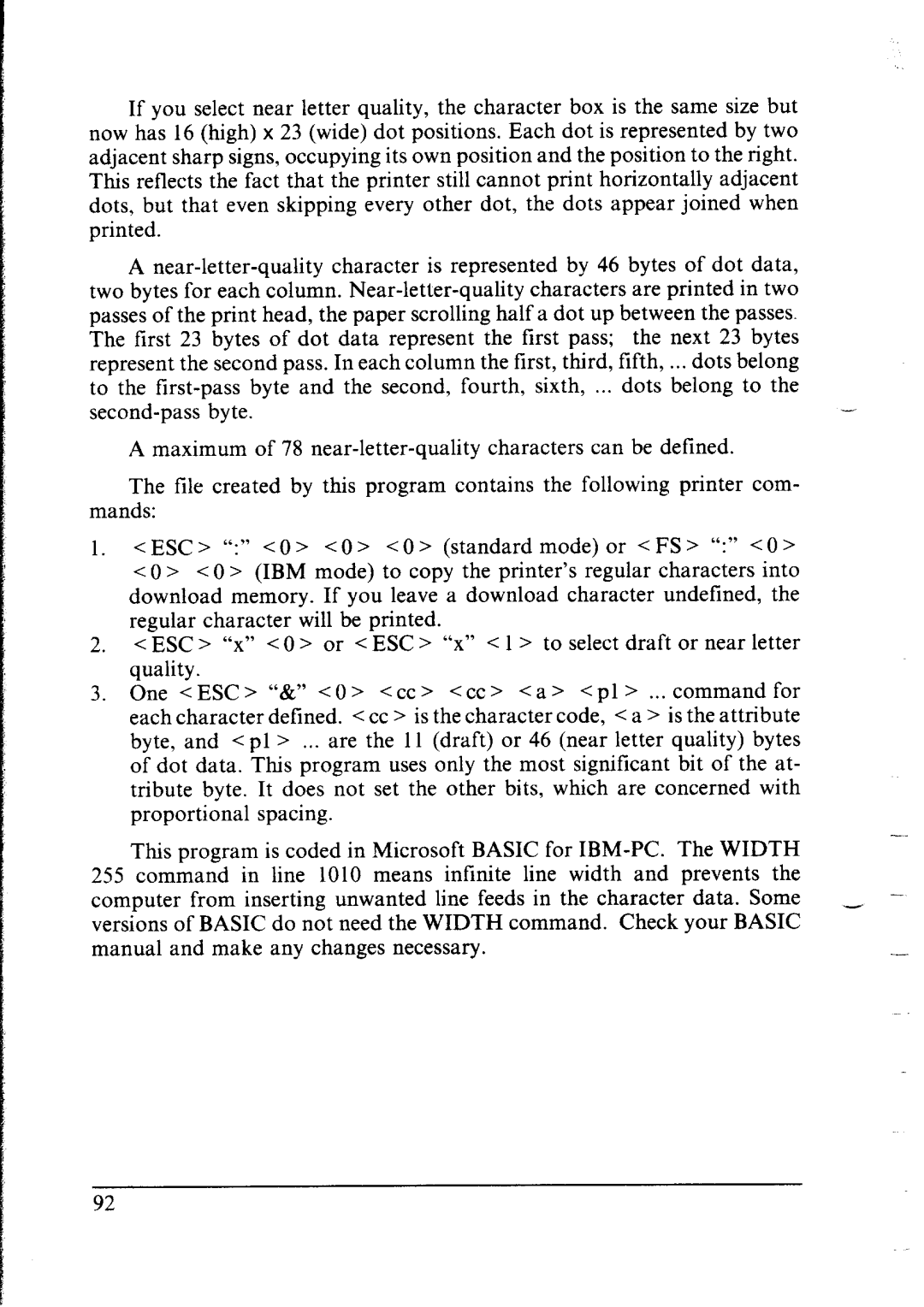
If you select near letter quality, the character box is the same size but now has 16 (high) x 23 (wide) dot positions. Each dot is represented by two adjacent sharp signs, occupying its own position and the position to the right.
This reflects the fact that the printer still cannot print horizontally adjacent dots, but that even skipping every other dot, the dots appear joined when printed.
A
two bytes for each column.
A maximum of 78
The file created by this program contains the following printer com- mands:
1.< ESC > “:” < 0 > < 0 > < 0 > (standard mode) or < FS > “:” < 0 >
<0 > < 0 > (IBM mode) to copy the printer’s regular characters into
download memory. If you leave a download character undefined, the regular character will be printed.
2.<ESC> “x” <O> or <ESC> “x” < 1 > to select draft or near letter
quality.
3.One <ESC> “&” <O> <cc> <cc> <a> <pl> .. . command for each character defined. < cc > is the character code, < a > is the attribute byte, and <pl > ... are the 11 (draft) or 46 (near letter quality) bytes of dot data. This program uses only the most significant bit of the at- tribute byte. It does not set the other bits, which are concerned with
proportional spacing.
This program is coded in Microsoft BASIC for
255 command in line 1010 means infinite line width and prevents the
computer from inserting unwanted line feeds in the character data. Some
versions of BASIC do not need the WIDTH command. Check your BASIC manual and make any changes necessary.
-
92
